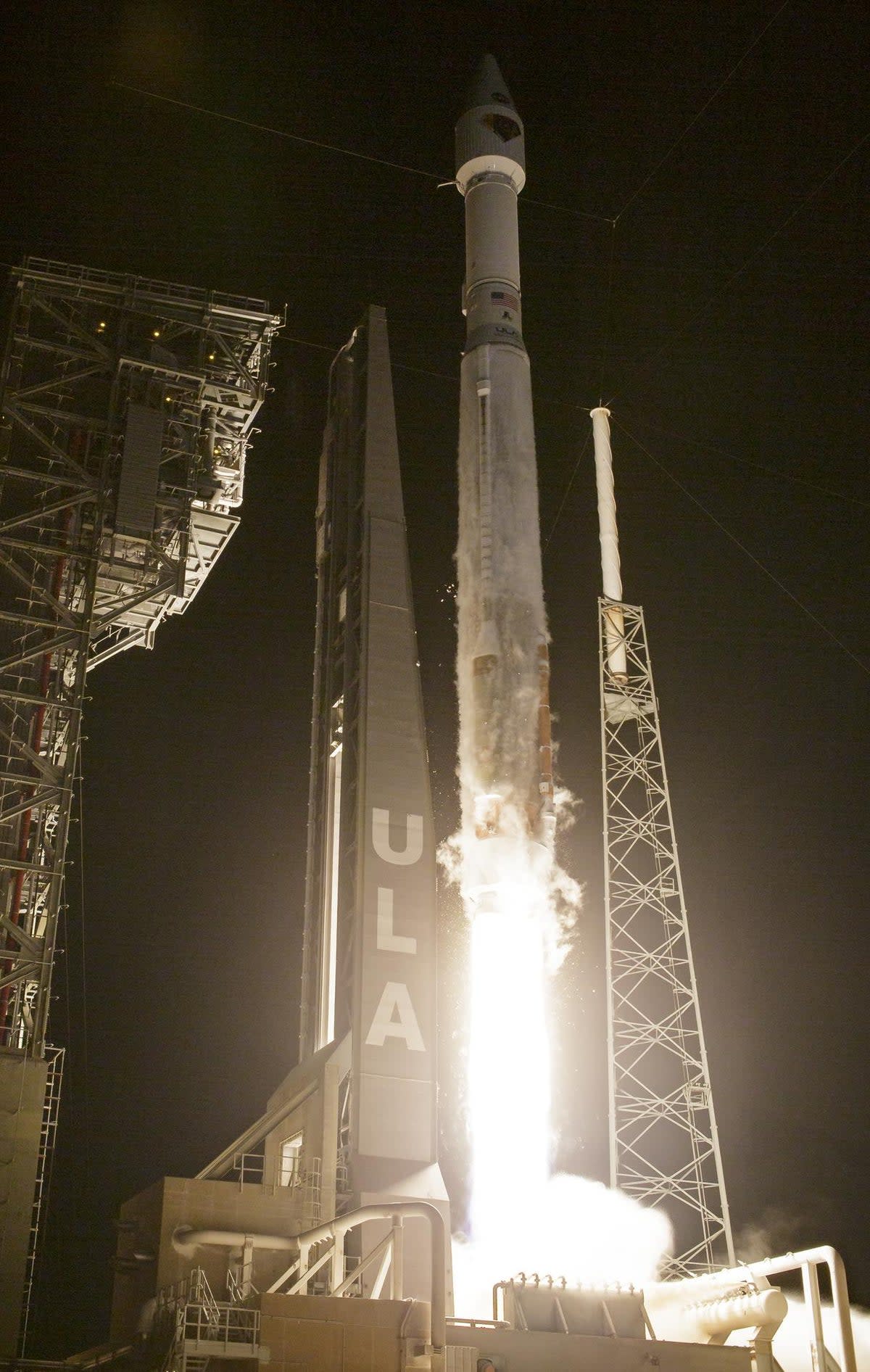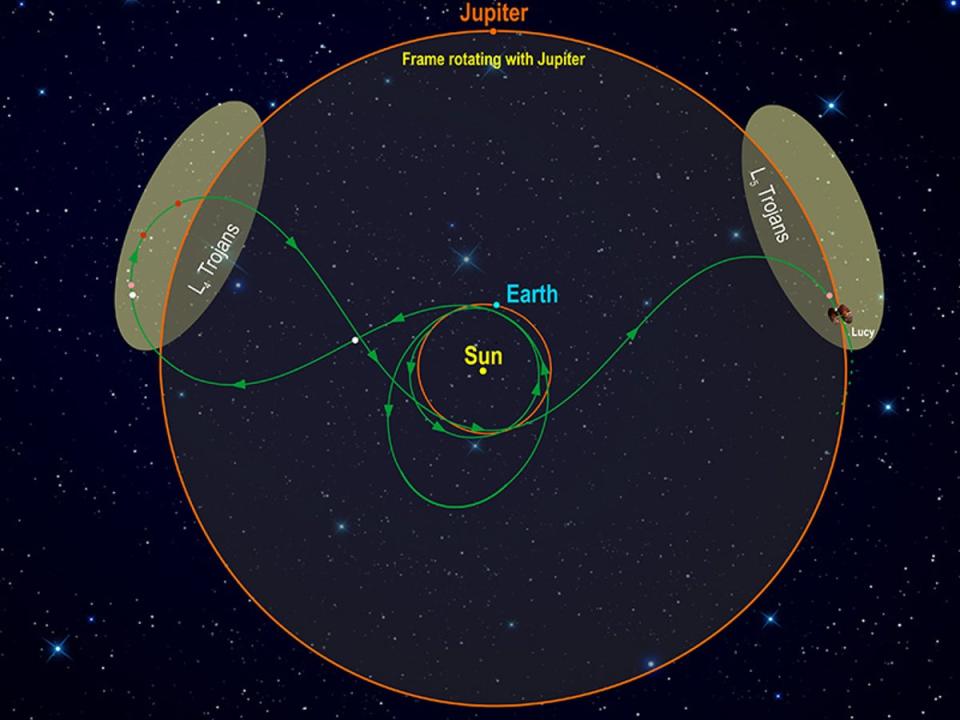Nasa’s Lucy mission to buzz Earth on Sunday

Lucy, Nasa’s ground breaking mission to the distant Trojan asteroids of Jupiter, will skim the Earth’s atmosphere Sunday on its way out to the orbit of the gas giant planet, and may be visible to sky watchers in Western Australia and the US west coast.
The large school bus-sized Lucy spacecraft will pass within 220 miles of Earth Sunday morning, actually skimming the planet’s upper atmosphere. Alert sky watchers in Western Australia may catch Lucy for a few minutes around 6.55am EDT, 6.55pm local time, streaking overhead as it emerges from the Sun’s glare.
“It is expected to rise in the West and become visible to the naked eye,” a Nasa website on the flyby reads. “At its brightest, Lucy is expected to approach 1st magnitude, rivaling the brightest stars. Lucy will likely be brighter on the western side of the viewing region because that is the side facing the Sun.”
Lucy will then pass into Earth’s shadow, and will not be visible during its closest approach to Earth while over the Pacific Ocean.

But by 7.26am EDT, some people on the US West coast may catch Lucy streaking overhead if using binoculars, according to a Nasa blog. At that point, the spacecraft will already be more than 4,000 miles away once more, and will be much fainter than when it passed over Australia.
Wherever your location, Nasa’s Horizon application can provide instructions on where to look for Lucy relative to your view of the horizon. Nasa encourages anyone who captures images of Lucy to share them on social media using the hashtag #SpotTheSpacecraft, or images of themselves waving at the passing Lucy using the hashtag #WaveToLucy.
Lucy’s passage by Earth will be so close, ground operators with the mission navigation team at KinetX Aerospace in Simi Valley, California, may have to steer the spacecraft around orbital debris.
“The Lucy team has prepared two different maneuvers,” Lucy deputy navigation team chief Coralie Adam said in a statement. “If the team detects that Lucy is at risk of colliding with a satellite or piece of debris, then —12 hours before the closest approach to Earth — the spacecraft will execute one of these, altering the time of closest approach by either two or four seconds. This is a small correction, but it is enough to avoid a potentially catastrophic collision.”
Lucy’s flyby comes on the one year anniversary of the mission’s launch from Kennedy Space Center, in Florida, on 16 October 2021. Lucy is Nasa’s first mission to the Trojan asteroids of Jupiter, two large populations of space rocks that share the gas giant’s orbit, but precede and follow the planet by 60 degrees along that orbit.
Sunday’s flyby of Earth will give Lucy added momentum, slingshotting the spacecraft out toward the orbit of Mars, a maneuver known as a gravity assist. Lucy will make another gravity assist pass by Earth in 2024 before finally heading out toward its first targets.
The spacecraft will first flyby an asteroid known as Donaldjohanson in the main asteroid belt in 2025, a space rock that is not a Jupiter Trojan, but is conveniently located along the way.
Lucy will then reach the leading population of Jupiter Trojans in 2027, flying by four space rocks, Eurybates, Polymele, Leucus, and Orus, each named for characters in the Homeric epic The Iliad.
Lucy will then head back to Earth for another gravity assist flyby of our planet in 2031, which will put the spacecraft on a course to visit the trailing population of Jupiter Trojans in 2033, visiting the binary pair of asteroids Patroclus and Menoetius, which orbit each other at just 400 miles apart.
Seen from above, Lucy’s flight path looks like a figure eight twisted up like a pretzel, according to Nasa.

But long before Lucy visits any asteroids, it will begin taking images closer to home as it approaches our planet on Sunday.
“I’m especially excited by the final few images that Lucy will take of the Moon,” acting Lucy deputy project scientist at the Southwest Research Institute, John Spencer, said in a statement. “Counting craters to understand the collisional history of the Trojan asteroids is key to the science that Lucy will carry out, and this will be the first opportunity to calibrate Lucy’s ability to detect craters by comparing it to previous observations of the Moon by other space missions.”

